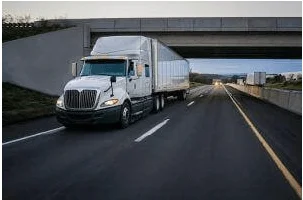
In response to the recent shortages of supplies and food caused by the COVID-19 outbreak, drive time restrictions have been lifted for commercial truck drivers delivering emergency provisions.
The Federal Motor Carrier Safety Administration (FMCSA) recently announced that they have temporarily suspended daily driving limits for truck drivers transporting “essential supplies, equipment and persons” in support of emergency relief efforts related to COVID-19.
Previously, truck drivers were only able to drive 11 hours in a 14 hour workday, according to the FMCSA. Now, drivers who are transporting emergency relief supplies such as medical equipment, hand sanitizer and disinfectants, and food for emergency restocking of shelves, are not required to follow this rule. Drivers who need rest must be permitted ten consecutive hours off duty. However, the driver must inform the motor carrier that they need rest.
Truck drivers and the job they do are an essential part of the community. The trucking industry moves over 70% of all freight in the U.S. and keeps our economy moving. We rely on truck drivers to keep food on the shelves of our grocery stores, medical supplies stocked in our hospitals, and essential items delivered when and where they’re needed.
During this tumultuous time, our truck drivers have answered the call, working overtime to deliver necessary items, making them essential in the Coronavirus recovery efforts.
America needs good truck drivers. Generally, the truck driver is a better driver than most. The added pressure from their employer to keep the wheels turning can lead to less reliable driving conditions. Most of the current trucking regulations are in place to help the truck driver stand up to their employer and prevent them from getting in an unsafe truck or driving situation.
Prior to every trip, a driver is required to perform a pre-trip inspection. This includes testing brake lights, hoses, wheels, gauges, and breaks to ensure they are working at optimal performance. Then, while on the road, drivers must adhere to strict rules for drive time and length of driving breaks. Such heavy-handed regulations are also in place to protect other drivers. A 40,000-pound mistake can cause a lot of destruction.
Numerous studies have proven drowsy driving is as dangerous as drunk driving. It is a serious problem. Not being well-rested can cause a driver to miss details, cause slow reaction times, and cause often-fatal accidents.
While truck drivers provide essential services and are modern-day heroes during this COVID-19 outbreak, the loosened regulations could result in terrible unintended consequences.
You can proactively take steps to keep yourself, your passengers, and other drivers safe while on the road. Attorneys at Chad Jones recommends the following:
Big truck blind spots include: 20 feet in front of the truck and 30 feet behind the truck. On the sides of the truck, until you can see the driver in their mirror, they cannot see you. When passing a big truck, always pass on the left and pass as quickly as you can while maintaining the speed limit. Don’t linger beside a semi-truck.
Even during this time of social distancing and shelter-in-place orders, driving cannot always be avoided. As you share the road with big trucks, be safe and vigilant. Truck drivers, like the rest of us, are working diligently and want to make it home at the end of the workday. When you drive smart and respect other drivers, you contribute to safer roads, making it safer for everyone.
If you have further questions, give us a call or text us. We are here for Texas drivers, providing free consultations and sharing best practices. Our main goal is keeping our neighbors safe and healthy, fighting for their compensation when accidents do happen. Do you have a question about an accident? Reach out to us today!